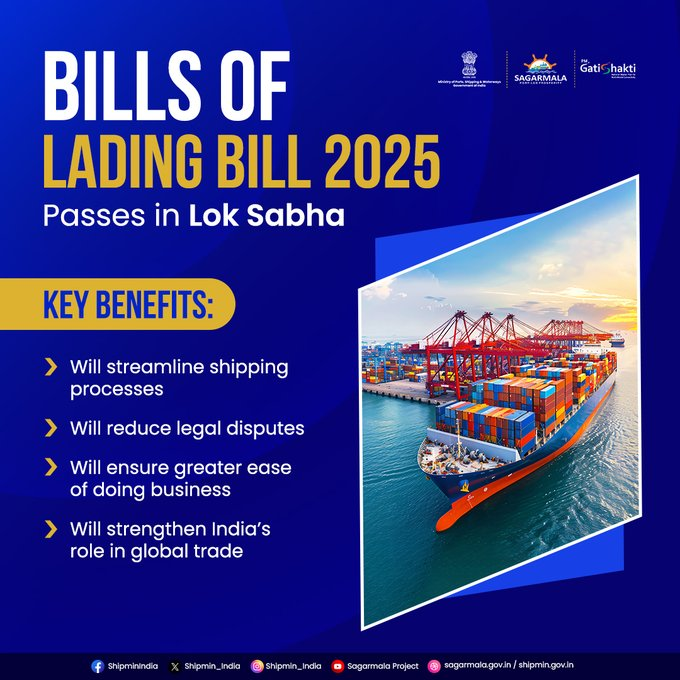
The Bills of Lading Act 1856 and 2025 - What’s different?
Aug 22, 2025
By Capt. Dinesh Gautama
As is well known, a Bill of Lading has three functions. It is a receipt for the goods received on board a ship, it is a document of title and it is a strong evidence of a contract.
The Indian Bills of Lading Act of 1856 was based on the UK Bill of Lading Act of 1855. It is a small Act. The Preamble and its three sections can be printed on a standard A4 sheet of paper. Being an important piece of commercial document and with the passage of more than a century, there is a general tendency to re-look at its relevance and amend it so that it moves with the prevailing trend of digitisation and technology.
The move to amend the Bill of Lading Act 1856 has only gained momentum since the past seven years or so, and the amended version came out as The Bills of Lading Bill 2024 dated August 6, 2024 which was introduced in the Lok Sabha and Rajya Sabha on August 9, 2025. It was seven months later, on March 10, 2025, that it was passed by the Lok Sabha. Thereafter, on July 21, 2025, it was passed by the Rajya Sabha and sent to the President for her assent. It received the assent from the President on July 24, 2025 and was published in the Gazette Extraordinary (Part II Section 1) by the Ministry of Law on the same day. So The Bills of Lading Act 1856 is now replaced by The Bills of Lading Act 2025.
Let us look at both the Acts – the old and the new and see what is different.
The Indian Bills of Lading Act 1856 has a paragraph for the Preamble, followed by three sections. The first section explains that every consignee of goods named in a bill of lading and every endorsee of a bill of lading to whom the goods shall pass will also get the rights of suit – but at the same time the endorsee will also be subject to the same liabilities in respect of such goods.
The second section states that nothing contained herein shall affect any right of stoppage in transit or any right to claim freight against the original shipper or owner or any liability of the consignee or endorsee by reason or in consequence of his being such consignee or endorsee, or of his receipt of the goods by reason or in consequence of such consignment or endorsement.
The third section was introduced to cover the issues that arose during the Grant versus Norway case. This section states, inter alia, that every bill of lading in the hands of the consignee or endorsee (for valuable consideration) shall be conclusive evidence of such shipment as, against the master or other person signing the same, notwithstanding that such goods may not have been shipped.
In short, the preceding three paragraphs cover an explanation of the old Act of 1856.
Now let us look at the new Act – The Bills of Lading Act 2025.
The Preamble has remained the same except for the formatting and the grammar. The intention has remained the same.
There are a total of 6 sections in the new Act.
Section 1 only introduces the title of the Act and defines a date when the new Act will come into force. The second, third and fourth sections are the same as the old sections one, two and three respectively. They have been formatted a little and words moved hither and thither to give some better clarity. However, the intent remains the same as what was intended in the old Act.
It is section 5 that makes all the difference. This section gives all the powers to the Government to give directions for carrying out all or any of the provisions of this Act. This section gives the flexibility and the ease to move forward based on past time-tested tradition with an eye on the fast-moving technology. This was not there in the old Act.
Section 6, the last one, only relates to repealing of the old Act of 1856 and its effects on ensuing matters which may have arisen under the old Act.
On the whole, it is a welcome step forward for the Indian shipping industry.
Please visit our youtube channel https://www.youtube.com/@ikargos2719 for fortnightly logistics news analysis and more!